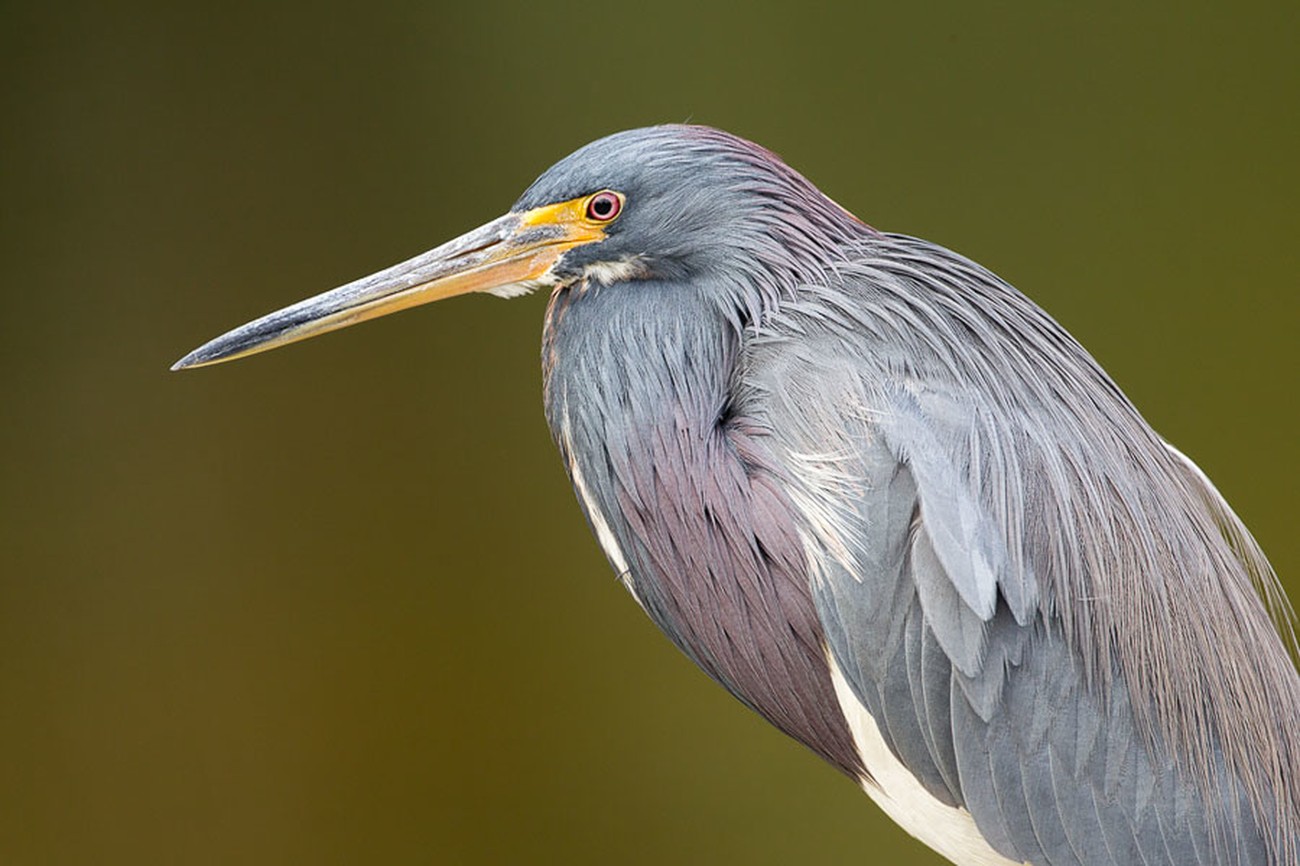Enjoy our guest judge Interview with Melissa Groo who will be judging the Birds Of A Feather Photo Contest. Melissa is an award-winning wildlife photographer, writer, teacher and speaker. She writes a regular column on wildlife photography for Outdoor Photographer magazine, and her photos have been published in many magazines, including Smithsonian, Audubon, and National Wildlife. Issues of conservation and ethics in photography are passions for her, but more than anything, she loves revealing the soul of her wild subjects and sharing that with others.
What are the keys to a beautiful bird image?
I think many beautiful bird images have the following common elements: soft light, a graceful pose or moment of emotion, an eye level perspective, and a sharp subject with an out of focus, uncluttered background.



But of course rules are meant to be broken and I see many instances where the habitat can be a larger player, lending more of a story as well as framing to the bird. Even some small in the frame bird images can be startlingly beautiful. That to me speaks of more skill almost, in a bird photographer.

In your eyes, is there any essential equipment for photographing birds?
It depends on your goals. I would say most serious bird photographers use a DSLR camera. I think DLSRs are still unmatched for their image quality and speed capabilities. I do see quite a few hobbyist photographers who are using superzoom cameras and getting great results. The Panasonic Lumix FZ200, the Canon SX60, and the Nikon Coolpix P900 or P610 are some of the camera models that seem to be popular; I'm sure there are others that people use and are very happy with as well.
- Telephoto lenses. The best telephoto lenses for birds range from 300mm to 800mm. Fixed lenses are generally considered the sharpest, but I also hear great things about the Canon 100-400mm f/4.5-5.6L IS II and the Sigma 50-500mm f/4-6.3.
- Teleconverter lenses, or extenders, are essential items for furthering your reach. I have both the Canon 1.4x and a 2x.
- Tripod. It makes a lot of sense to buy a high quality tripod the first time. They are expensive pieces of gear, but trust me, this is one item you don't want to skimp on. It's critical to helping you get sharp images. I prefer tripods made of carbon fiber because they're lighter and thus easier to carry out in the field.
- There are a lot of choices here, and we are lucky to live in an age that offers so many. What it comes down to in the end of the way, is what works best for you given your goals.
What about flying birds?
For flying birds I think you need a camera that captures at least 6 or 7 frames per second and a handholdable lens with an f-stop of /5.6 or smaller (to allow for wider apertures). I say “handholdable” because that's the only way that I myself am able to photograph flying birds, but I do know there are folks who are able to successfully photograph birds on the fly while using a tripod, given the right setting.


Lenses from 300-500mm, both zoom and fixed, are recommended, and the use of teleconverters when possible. Keep in mind though that teleconverters will cut down on your light and thus speed. Technology that reduces shake (IS for Image Stabilization in Canons; VR for Vibration Reduction in Nikons) is helpful but there are lenses like the Canon 400mm f/5.6 that is a fantastic lens for bird photography, delivering very sharp results without IS.


Any tips for photographers who don't have this gear?
Work on images that feature the bird in its habitat. Face that challenge head on and see if you can make artistic photographs where both the bird and its environment are players. Spend time in public parks or cemeteries where birds are more comfortable around people and you may be able to get closer. If you're a birder and have a scope, look into digiscope photography which is becoming quite popular, where you attach a scope to your camera. I see some wonderful photographs taken by digiscope photographers.
What are your top tips for photographing birds?
Stay with your subject. Only by really being patient, and by observing over a period of time will you capture photos that truly show unique behavior or poses.
Make your subject comfortable with you by giving it space. Work in blinds when you can. Your best photos will come from the unaltered behavior of a bird that is not feeling crowded or threatened.
Study the work and practices of other photographers that you admire. Invest in workshops with photographers whose work and approach you really resonate with.
Don't neglect the post-processing aspect; you need a solid foundation in basic skills like exposure correction, sharpening, noise removal.
Any secrets for capturing images of birds in flight?
- Practice. Skillful hand-eye coordination is critical.
- Use a lens you can handhold for at least short bursts of time.
- Photograph flying birds only in good light. Sunlight is best, as long as the sun is not too high, but bright overcast conditions can work too. What is just as important as the quality of light is that light's relationship to the wind. Light and wind should be coming from the same direction. Thus, in the morning, the sun should be behind you and the wind coming from behind you as well. In the late afternoon, again, the sun and wind should both be at your back (from the west). If you are heading out to photograph birds in flight in the early morning, and you discover that it's a westerly wind—change your plans. I can't tell you how many times I've made that mistake, going out when the light and the wind are at odds.
Of course, it's fun to get creative and shoot against the light sometimes as getting a bird's wings backlit can be beautiful. I did this with a Great Gray Owl in Jackson, Wyoming, and really loved the effect. I also purposely shot against the light at a local park at sunrise, when Cedar Waxwings were hawking insects, and it was a wonderful way to tell that story, as each insect became a point of light.


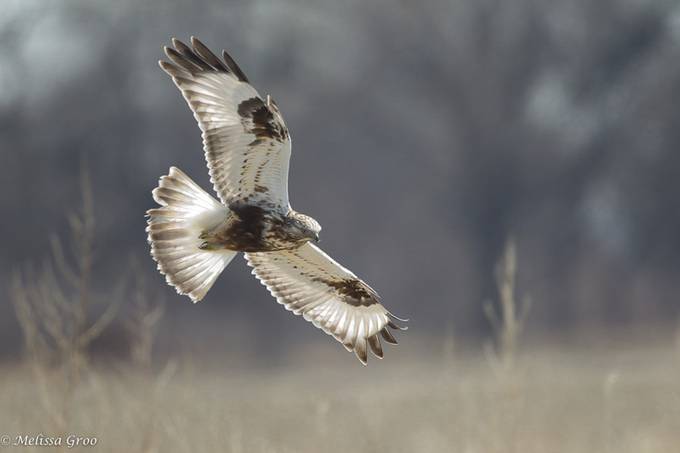
- Shoot in Manual mode. Only in this mode will your exposure stay the same no matter how the background changes in tone or color, that your bird is flying across. This is the best mode as long as the ambient light doesn’t change. If you have constantly changing light conditions, Aperture Priority may be a better bet.
- Work on your stance and get it down. Tuck your elbows in to your sides to brace your lens, pan with the bird, and twist smoothly at your waist.
- Make sure you are set to high speed continuous mode on your camera and have the fastest cf or sd card available in your camera. I use Lexar and Sandisk brands.
- Set your focus tracking sensitivity to the slow setting. Once you've acquired initial focus, this setting will keep the camera from refocusing to a different distance if your focus point momentarily slips off.
- Think always about speed, though realize you can adjust to your subject, as birds have such varying speeds. For example, you can get by with 1/1600 sec for wading birds like Great Blue Herons when they fly, but try to have 1/2500 or 1/3200 for raptors like Red-Tailed Hawks.
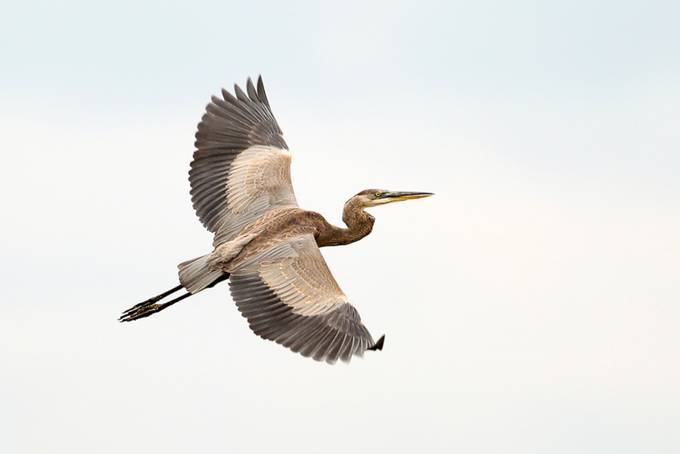
- Shoot with your aperture wide open to allow for the fastest speed (though don't be afraid to try slow shutter speeds though to experiment with motion blurs).
- Practice. I know I already said that, but it can't be said enough! Practice on gulls (especially great for exposure work!), or go to a local sports game and practice on basketball and soccer players!

Are there any sure-fire places for photographing birds?
I would have to say first of all that the whole state of Florida is a surefire place. It's like no other place I've ever been. The birds there are practically tame, and you can get away with just a 70-200mm lens and still get stellar portraits. I've heard that parts of Arizona and Texas are wonderful year-round too. In general, surefire places on our continent include: Nickerson Beach in NY for common terns, black skimmers, and oystercatchers, the Conowingo Dam in Maryland for bald eagles; Cape May, NJ; Magee Marsh, OH; and Point Pelee in Ontario for warbler migration, Sax-Zim Bog in Minnesota for owls, Bosque del Apache for sandhill cranes and snow geese in winter. There are hotspots for many birds out there, but you have to do the research. And then locally, where you live, fertile areas in spring and summer might be along forest edges, or at water sources, particularly in wetlands and on coastline.


Are there any overlooked or surprising places you like to photograph birds?
I mentioned public parks and cemeteries earlier. Public parks because one can more readily get close to birds there, as they are used to people walking around, and cemeteries because they are often overlooked havens for wildlife of all kinds. Streams and ponds near groceries and shopping malls often hold gatherings of different birds. Wastewater treatment plants can be incredibly productive too, as they are generally an aggregation of ponds that act as an oasis for waterbirds. Serious birders go to our local town dump to find rare gulls and the occasional peregrine falcon; that might be a good place to photograph birds in flight.
Do you mind sharing a few of your best bird shots, and explain what makes each special?
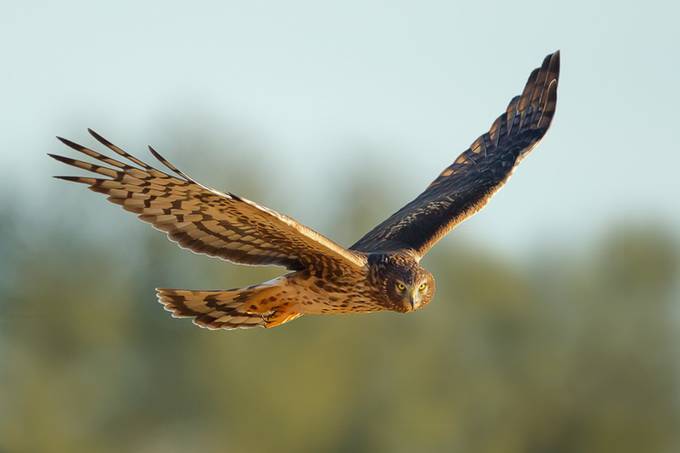
This Northern Harrier is one of the first raptors I ever photographed when I first got serious about wildlife photography a few years ago. Harriers are among my favorite birds. I photographed out my car window, and caught a moment when she looked right at me with the most penetrating stare, and I just felt completely hooked by making that connection to a wild animal, and being able to capture it with a photo. I've taken a lot of pictures of this species since then, but this remains my favorite.

This will be familiar to some of the readers, as it won the Grand Prize in this year's Audubon photography contest (in fact, some people are probably tired of seeing it!). But it will always be among my favorites for that distinctive honor. It's currently hanging in the Smithsonian Museum of Natural History and I'm hoping to get there to see it in person before it comes down in the fall to make way for the next winner.

American Avocets are one of my most favorite birds of all for their beauty and elegance. I spent quite a bit of time with them in Montana one spring, and was able to photograph them in breeding plumage and behavior. Here a pair pauses during their nest building.

I'm definitely drawn to photographing big white beautiful birds! This is a Snowy Egret on the hunt in Florida, and I really like the colors, the soft light, the pose of the bird. One of those times when all the elements came together nicely.
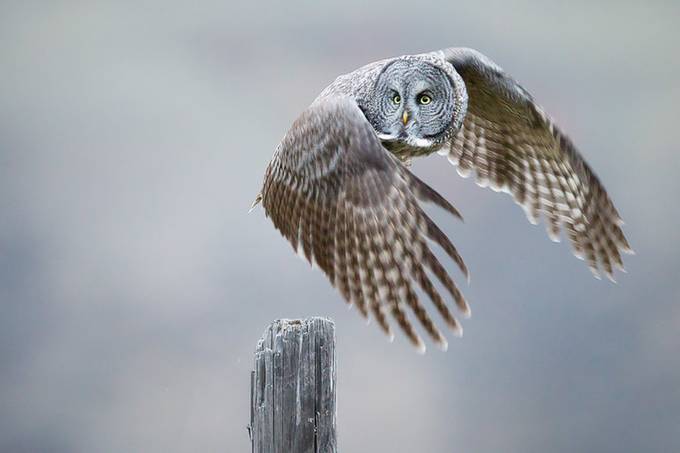
Maybe my favorite owl photo I've ever taken, this is a Great Gray Owl in Jackson, Wyoming a couple years ago. The owl was lifting off its post as it had spotted a vole in the meadow. I had the pleasure of photographing it hunting and resting over a period of two or three days. I really like the dynamic pose, which I think has great energy and focus, and the blue light of that wintery day.


